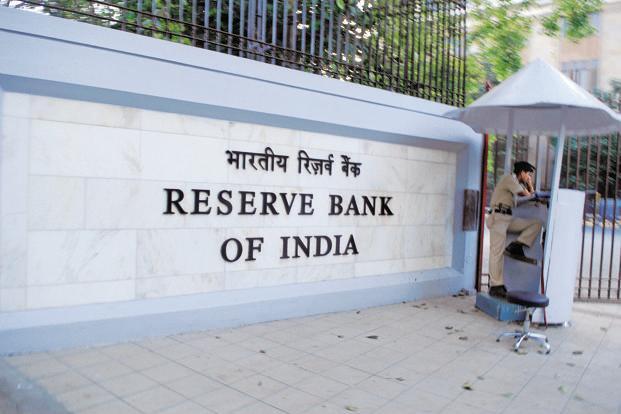In the last week of July, the board of directors of Axis Bank Ltd, India’s third largest private bank by assets (Rs6.07 trillion in June 2017) said it had reappointed its chief executive officer (CEO) and managing director (MD) Shikha Sharma, 58, for three years from June 2018.
The announcement, almost a year before her term comes to an end, was to silence endless media speculation on Sharma moving out of the bank which she has been heading since June 2009. A few days before the board decided to reappoint her (subject to regulatory approval, which could be a formality) there was “news” that Sharma could be joining Tata Sons Ltd to head its financial services business. The bank denied that report. This is one of the many news reports that have been written in the past few months on Sharma’s “exit”.
Sharma had joined Axis Bank from ICICI Prudential Life Insurance Ltd, replacing then chairman and chief executive of the bank P.J. Nayak. She had spent 29 years with the ICICI Bank group out of which the last nine years were with the group’s life insurance arm as its MD and CEO.
Incidentally, a few weeks before the board took the decision to reappoint Sharma for her fourth term, there were reports that it had engaged Egon Zehnder, a global executive search and talent strategy firm, to look for her successor. That fuelled even more speculation on Sharma’s next port of call. I understand that the mandate for Egon Zehnder was “market scan”. This is the first stage of a search for potential candidates for top level assignments. Probably, the scan did not yield a satisfactory result and hence the board opted for “continuity”.
Why had there been so much of speculation around Sharma? One explanation could be that she has a “nine-year itch”—she spent nine years at ICICI Prudential, and hence when her three terms of three year each end in June 2018, she would look for a new challenge. Before heading the insurance firm, she had spent 20 years with the ICICI Bank group but playing multiple roles— in the bank and its investment banking arm.
I don’t buy this. She had been in the news for a string of reasons.
In December 2016 when the demonetisation exercise was on (in the 50 days between 10 November and 30 December 2016, Rs15.4 trillion worth of currency notes of denominations of Rs1,000 and Rs500—some 86.9% of the value of total notes in circulation—were withdrawn to attack black money hoarders, fake currency and terror funding in the country), certain Axis Bank employees were allegedly found to have been involved in money laundering. Investigative agencies swooped and the bank suspended a few employees after it was found that a sum of Rs100 crore had been deposited in 40 fake accounts.
Then, there has been a divergence between the bank’s disclosed non-performing assets (NPAs) for fiscal year 2015-16 and the Reserve Bank of India’s (RBI) assessment, leading to under-provisioning. The banking regulator had found a gross NPA divergence of Rs9,478 crore, raising Axis Bank’s bad loans in the last fiscal year to Rs15,566 crore. If we go by the regulator’s assessment, Axis Bank’s gross NPAs in 2016 would have been 4.5% of its loan book against the reported 1.78% and also the required provisioning would have dented its profit.
To be sure, quite a few other banks, including Yes Bank Ltd and ICICI Bank Ltd, too had reported a divergence between their and RBI’s bad loan assessments. These incidents have dented the image of the bank even as reports of another private bank expressing interest in buying the Specified Undertaking of Unit Trust of India’s (SUUTI) 12% stake in Axis Bank created confusion.
How has Sharma done in her eight-year tenure?
The compound annual growth rate or CAGR of Axis Bank’ profits, advances, deposits and overall assets are lower than that of three private banks—IndusInd Bank Ltd, Yes Bank and Kotak Mahindra Bank Ltd—while CAGR of bad loans is as high as that of Yes Bank. But this is an unfair comparison as these banks are far smaller than Axis Bank. For instance, in March 2009, before Sharma took the reins of Axis Bank, its assets were to the tune of Rs1.48 trillion vis-a-vis Rs22,900 crore of Yes Bank, Rs27,615 crore of IndusInd Bank and Rs28,712 crore of Kotak Mahindra Bank.
A fair comparison could be with two other large private banks—HDFC Bank Ltd and ICICI Bank. In March 2009, ICICI Bank was the largest private bank in India with Rs3.79 trillion of assets and HDFC Bank Rs1.83 trillion. Since then, HDFC Bank’s assets have grown at 18.8% CAGR to Rs8.84 trillion; ICICI Bank’s at 8.21% to Rs7.72 trillion and Axis Bank’s at 16.88% to Rs6.01 trillion (all 31 March 2017 figures).
The CAGR of Axis Bank’s operating profit in the past eight years has been 18.82%, net profit 8.17%, advances 18.4% and deposits 15.05%. In this period, HDFC Bank has grown at a much faster pace—19.5% for operating profit, 23.08% for net profit, 20.93% for advances and 18.21% for deposits. How has ICICI Bank done on these four parameters? Its operating profit has grown 12.85%, net profit 11.24%, advances 8.74% and deposits 9.4%.
When it comes to bad loans, in March 2009, Axis Bank’s gross NPAs were 0.96% of its loans. This has risen to 5.03% in June 2017. After setting aside money, its net NPAs during this period have risen from 0.35% to 2.30%. The comparable figures for HDFC Bank are 1.98% and 1.24% and 0.6% and 0.44% and that of ICICI Bank 4.32% and 7.99% and 2.09% and 4.68%. Clearly, the bad loan growth for Axis Bank is higher than other two.
Axis Bank stock has gained 3.13 times between 1 June 2009 and last Thursday (24 August 2017), lower than HDFC Bank (6.08 times) but higher than ICICI Bank (2.17%). Of course, the other three banks—IndusInd Bank, Yes Bank and Kotak Mahindra Bank—have rewarded their investors many times more.
Losing the plot
Clearly, Sharma has not been able to meet investors’ expectations. Many believe that she has lost the plot. That may not be a fair assessment of what she has been doing. Indeed, Axis Bank’s bad loans have been growing and profit is under pressure but she has been striving hard to write a different script to derisk the bank from future shocks.
Typically in India those banks which are heavily into corporate financing face the problem of rising bad loans in a cycle of eight to 10 years. Sharma has been trying to transform Axis Bank from a corporate bank to a retail bank. As of June 2017, retail loans constituted 46% of its loan book; loans to small and medium enterprises 12% and corporations 42%. In 2009, the share of corporate loans was far higher.
With bad loan recognition almost complete and the cycle of bad loan resolution being started (UltraTech Cement Ltd’s acquisition of cement plants of Jaiprakash Associates Ltd for Rs16,189 crore and Essar Group’s closure of a $12.9 billion deal to sell its refining arm Essar Oil to a consortium led by Russian oil major Rosneft signal this), one can expect the worst is behind Sharma and that her bank could start putting up a better show from the last quarter of the current fiscal year.
The rise in retail assets will boost its income and lower the risk of bad loan accumulation in future. In the past four years, the growth in Axis Bank’s retail loan portfolio has been almost double the banking industry’s retail loan growth and its profit from retail loans has grown four times even as increasing retail liabilities have been helping it bring down the cost of money.
She has a strong focus on building digital channels and growing the payments business. Demonstrating this, the bank has entered into an agreement with Jasper Infotech Pvt. Ltd to acquire its subsidiaries—Freecharge Payment Technologies Pvt. Ltd and Accelyst Solutions Pvt. Ltd—which offer the digital payments business under the ‘FreeCharge’ brand—for Rs385 crore. Once the deal is complete, Axis Bank will get access to at least 50 million registered wallet users and 200,000 merchants.
This is Sharma’s second acquisition. Her first, Enam Securities Ltd (in 2012-13), cost the bank Rs1,396 crore and it has started paying back. The share of profits from Axis Capital Ltd and Axis Finance Ltd—its investment banking and non-banking finance arms, created out of the Enam business—has been steadily rising. Since it was a share swap deal, to acquire the business, Axis Bank had seen an equity dilution of 2.87%. The share of net profit of the two entities of the bank’s consolidated net profit has risen from 2.5% in 2015 to 7.04% in 2017 and the combined current valuation of the two is more than four times of the price of acquisition.
The board’s confidence in Sharma may not be misplaced but her image among a section of Axis Bank employees, particularly those who have left the bank, has taken a beating. Asking employees to leave for non-performance is not new among private banks in India. HDFC Bank and a few others have done this in the recent past. However, unlike others, Axis Bank has got rid of many of its senior and mid-level executives. Indeed, they were given time and a “job sizing” exercise was conducted before showing them the door in 2014 but since this was done internally and not by any reputed external agency, Sharma is being perceived as biased. Job sizing determines the relative worth of each job on the basis of job description and specification and establishes wage and salary differentials. She has picked up talented people from the market to form the next level but somehow lost connectivity with a large chunk of employees.
In the last week of March this year, at her convocation speech at the Indian Institute of Management Ahmedabad, Sharma said the choice of a life partner is the single most important choice they would make in their lives. “Much of the joy you derive in your life does hark back to who you choose to share this journey with.”
This is true about the work place also. While Axis Bank is coming out of the woods, Sharma may want to rethink her strategy of breaking away from the cordon of senior colleagues and connecting with employees at every level, something which her predecessor had done deftly, to get the best out of them.
An unsolicited piece of advice.



